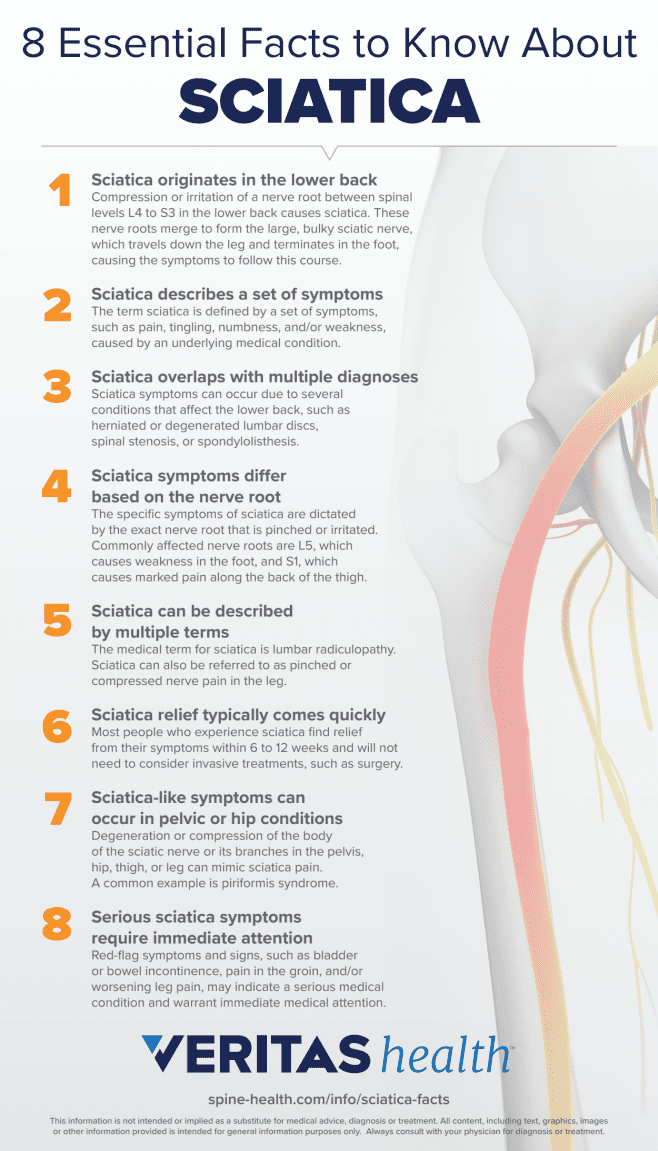Subscribe to our newsletter and get your FREE guide,
Natural Back Pain Relief: 16 Choices for Lasting Comfort.

- Sciatica originates in the lower back. Compression or irritation of a nerve root between spinal levels L4 to S3 in the lower back causes sciatica. These nerve roots merge to form the large, bulky sciatic nerve, which travels down the leg and terminates in the foot, causing the symptoms to follow this course.
- Sciatica describes a set of symptoms. The term sciatica is defined by a set of symptoms, such as pain, tingling, numbness, and/or weakness, caused by an underlying medical condition.
- Sciatica overlaps with multiple diagnoses. Sciatica symptoms can occur due to several conditions that affect the lower back, such as herniated or degenerated lumbar discs, spinal stenosis, or spondylolisthesis.
- Sciatica symptoms differ based on the nerve root. The specific symptoms of sciatica are dictated by the exact nerve root that is pinched or irritated. Commonly affected nerve roots are L5, which causes weakness in the foot, and S1, which causes marked pain along the back of the thigh.
- Sciatica can be described by multiple terms. The medical term for sciatica is lumbar radiculopathy. Sciatica can also be referred to as pinched or compressed nerve pain in the leg.
- Sciatica relief typically comes quickly. Most people who experience sciatica find relief from their symptoms within 6 to 12 weeks and will not need to consider invasive treatments, such as surgery.
- Sciatica-like symptoms can occur in pelvic or hip conditions. Degeneration or compression of the body of the sciatic nerve or its branches in the pelvis, hip, thigh, or leg can mimic sciatica pain. A common example is piriformis syndrome.
- Serious sciatica symptoms require immediate attention. Red-flag symptoms and signs, such as bladder or bowel incontinence, pain in the groin, and/or worsening leg pain, may indicate a serious medical condition and warrant immediate medical attention.
This information is not intended or implied as a substitute for medical advice, diagnosis or treatment. All content, including text, graphics, images or other information provided is intended for general information purposes only. Always consult with your physician for diagnosis or treatment.
